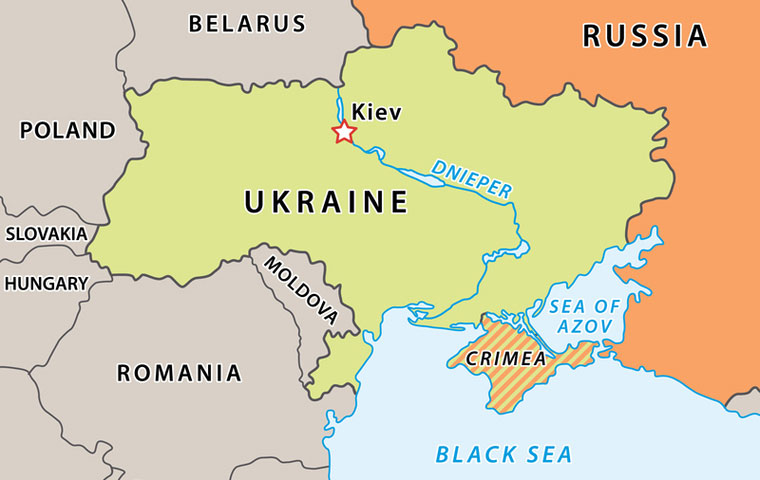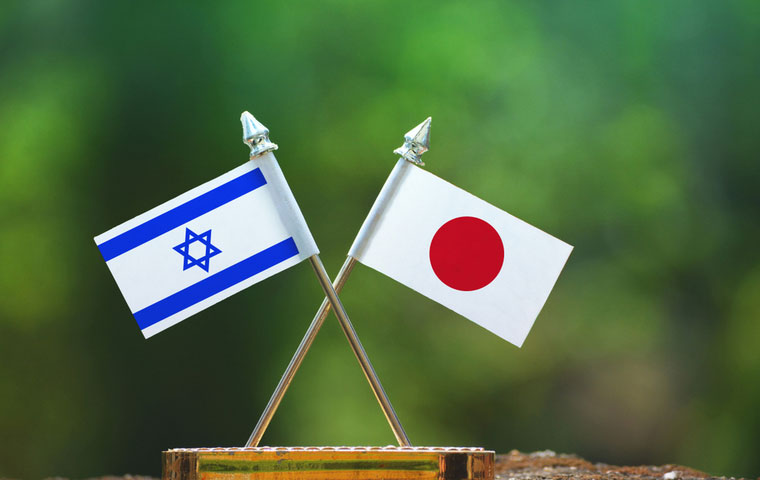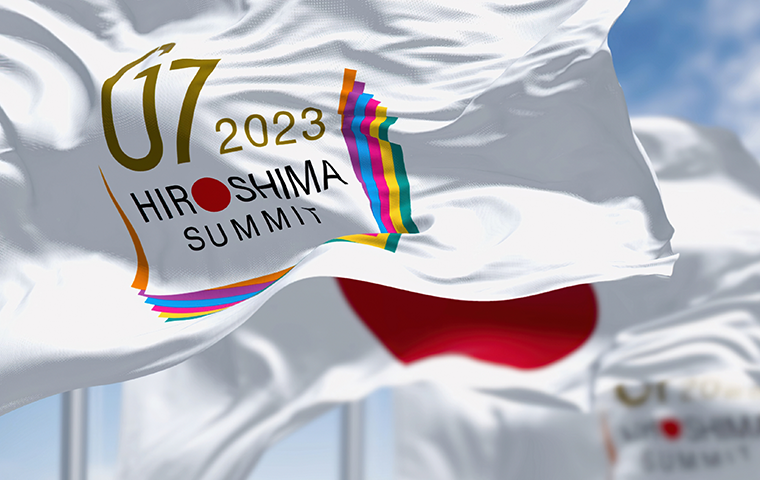China Is Set to Wage Hybrid Warfare
Related Articles

The Ukraine Crisis in 2014 marked the beginning of the hybrid warfare in the world. From fall 2013 to March 2014, Russia pressured Ukraine in every spectrum—through repeated political and economic pressures, cyberattacks, and “military drills” along the border with maximum 150,000 Russian troops.
Before long, a group of fully armed men in green camouflage that lacked identifying insignia (little green men) appeared in Crimea. One after another, they occupied the critical infrastructures, including the local government building, parliament, military facilities, and airports. Russia’s regular military forces joined in to further expand operations. As Ukrainian forces failed to effectively fight back, Russia occupied the Crimea Peninsula in no time, physically separating it from mainland Ukraine.
Shortly after this blitzkrieg, Crimea held a referendum on whether to join the Russian Federation. With support from the majority of the voters, Crimea was incorporated into the Russian Federation in a “democratic” and “legal” manner on March 18, 2014.

Since the Ukraine Crisis, there has been lively debate on hybrid warfare among security experts in the U.S. and Europe, and China is paying close attention to the one demonstrated by Russia. In May 2016, just when Taiwan President Tsai Ing-wen took office, Chinese President Xi Jinping sent internal orders to governmental think tanks and external exchange organizations in China to “study Russia’s annexation of Crimea.” For Xi Jinping, who wants to complete “the great rejuvenation of the Chinese nation,” annexation of Taiwan is a vital undertaking.
“China is highly likely to wage a hybrid war and annex Taiwan”—such claims are becoming noticeable even among Japanese intellectuals.
Threat of Unconventional Nature
However, it is often doubtful whether those involved in the debates understand precisely the meaning of hybrid warfare.
Some say that hybrid warfare is not a meaningful term since historically, wars had been “hybrid.”
It is truism that since World War I, state governments had to protect the critical infrastructures in the “home front” and procure and maintain resources through a secure route, besides “front-line” battles by the regular forces. They also had to brace for the enemy country’s propaganda that aims public opinion manipulation and psychological warfare to sap national morale.
In a sense, the Vietnam War and the Soviet invasion of Afghanistan were also “hybrid.” The U.S. had to fight against the Viet Cong, and the Soviet against armed guerrillas calling themselves Islamic jihadists. Both are non-state actors and irregular forces. Also, in the “war against terror” since 2001, U.S. troops have experienced irregular warfare against Taliban, Al-Qaeda, and Islamic State (IS).
Yet the Ukraine Crisis in 2014 was different in nature from these “hybrid” battles. This is because military powers like Russia and China may deploy conventional forces to support irregular forces, and they may deploy nuclear forces to deter counterattacks from allies and friendly nations of the target country.
Considering these factors, it is more appropriate to view the hybrid warfare that has come in the spotlight as a new security threat, different in nature from the war against terror.
Another, a rather misguided interpretation of the term hybrid warfare, considers it a method of war that full uses “information and psychological warfare including politics, economy, diplomacy, and propaganda, besides military forces.” This interpretation assumes that hybrid warfare is a meaningful concept, with literal emphasis on “hybrid” and “warfare.”
Such needless confusion concerning hybrid warfare occurs because discussions in Japan practically ignore research trends in the U.S. and Europe.
Due to the limited space, while I cannot explain this in full here, I have covered the issue of hybrid warfare definition based on the previous literatures conducted in the U.S. and Europe in my book titled The Age of Hybrid Warfare: Challenges to Democracy (Tokyo: Namiki Shobo, 2021, in Japanese). Based on the previous literatures, hybrid warfare can be defined as “coercive, subversive, covert or deniable activities, supported by conventional or nuclear forces, which can be used in a coordinated manner by state or non-state actors to achieve specific objectives while remaining below the threshold of formally declared warfare.”
The main point of hybrid warfare based on this definition is that state actors possessing plenty of nuclear and conventional forces, while mobilizing non-state actors, use various means to take actions below the level of military force by regular forces to change the status quo. Thus, in hybrid warfare, not only the means but also the hybrid nature of the actor is important. Although we use the term “war,” it is not a “war” that applies as the use of force under international law.
United Nations Charter (Article 2 [4]) prohibits the use of force. But hybrid warfare is not a form of conflict assumed by the UN Charter, and whether the right to self-defense can be evoked towards hybrid warfare that is indiscernible as obvious use of force remains a gray area.
China Is Already Equipped
The existence of non-state actors that obscure the involvement (attribution) of state actors, and the capability for operations that do not immediately apply as use of force, play key roles in attaining a hybrid war that has legal gray areas.
Already, China fully possesses these capabilities for waging hybrid warfare.
On December 31, 2015, the People’s Liberation Army (PLA) changed the Second Artillery Force that handles missile forces to the Rocket Force, and upgraded its status to a full service on par with the Army, Navy, and Air Force.
The PLA also established the Strategic Support Force (SSF), basically formed by the Staff, Political Work, Logistics, Equipment, and Space Systems Departments. The SSF handles information, space, cyber, and electronic warfare.
In the co-authored book, On Modern War: Beyond ‘Unrestricted Warfare,’ the War in the 21st Century (Tokyo: Wani Books, 2020, in Japanese), Self-Defense Force alumnus former lieutenant general Yoshikazu Watanabe and former rear admiral Takahiro Sasaki point out that the SSF is mainly a force for non-kinetic warfare, with exceptions such as space warfare using missiles to destroy the enemy’s satellites.
While it does not implement physical destructive activities visibly, non-kinetic warfare causes failures in vital infrastructure such as military facilities, airports, ports, power plants, and communication facilities. It is hard to determine whether this constitutes the use of force prohibited by the UN Charter, which makes immediate counterattack measures difficult.
We also should not underestimate China’s capability to wage hybrid warfare in the maritime domain.
The PLA has a Navy, which is called the First Fleet. They also have the China Coast Guard (CCG, or Armed Police Force Coast Guard Corps) called the Second Fleet, and Maritime Militia called the Third Fleet. The CCG is practically an army, rather than an armed police force the name suggests.
China’s Armed Police Law states “non-war military operations” and “maritime maintenance (protection of interests) and law enforcement” as its peacetime missions. The Coast Guard Law that went into force in February 2021 states CCG has the right to take enforcement measures on foreign military vessels and non-commercial government vessels that do not follow its orders.
Maritime Militia, dubbed “little blue fishermen” by experts who liken them to Russia’s “little green men,” are fisherman, or actually soldiers not wearing camouflage. Together with the CCG, they cooperated with the Chinese Navy and played a big part in the reclamation of the three reefs, Fiery Cross, Subi, and Mischief in the South China Sea, the construction of artificial islands, turning them into military bases, and maritime expansion into the East China Sea around the Senkakus.
By actively mobilizing the CCG and Maritime Militia, China aims to deliberately obscure the attribution of non-state actors that contribute to changing the status quo, and prevent the target countries from taking military countermeasures against China.

Cyberattack is one of the well-known situations in which the ambiguous attribute makes countermeasures difficult. China is also steadily gaining the capability for cyber warfare. In May 2014, the U.S. Department of Justice indicted five members including officers, of the cyber unit PLA Unit 61398 (based in Shanghai) for breaking into the computers of U.S. companies to steal their information.
Since this incident, the PLA has diversified its cyber unit operations. In late April 2021, it became clear that large-scale cyberattacks targeting about 200 companies and research institutions in Japan, including Japan Aerospace Exploration Agency (JAXA) occurred between 2016 and 2017. It is believed that the cyber unit PLA Unit 61419 (based in Tsingtao) that targets Japan and South Korea is involved in the cyber operations.
Although the details are unknown, estimates say China already has 100,000 cyber unit personnel within the PLA. When we include non-military “patriotic hackers,” that figure will increase several-fold.
In the event of a hybrid warfare, Beijing may mobilize not only military or paramilitary organizations but also private sectors.
It is well known that President Xi is promoting military-civil fusion. As Australian professor Clive Hamilton made clear in his book Silent Invasion: China’s Influence in Australia, it is highly probable that Chinese nationals living abroad can engage in organized activities for China’s national interests in the target country, under the instructions of the United Front Work Department of the Central Committee of the Chinese Communist Party (UFWD).
The private sector will show its presence when it divides the nation or creates rifts between partner states in the target country.
Paving the Way to Taiwan Annexation

While security experts in Japan, the U.S., and Taiwan are anticipating the outbreak of a hybrid war over Taiwan, China considers itself as the victim of the hybrid war originating from the U.S.
Since 2014, the U.S. and Europe pursued research on hybrid warfare, while China has not openly implemented research activities involving academics and military personnel.
But on the backdrop of the trade war during the Trump administration, and souring U.S.-China relations over Tibet, Uygur, Hong Kong, and Taiwan, China also released a study on hybrid warfare by an expert from a PLA-affiliate agency. On the whole, the study says that the U.S., while pressuring China in various aspects including politics, economy, technology, and military, is launching paramilitary actions through fragmented elements, terrorists, and even armed riots within China, and that China is amid the hybrid war originating from the U.S.
Such take of the hybrid warfare is an argument for domestic consumption written in Chinese, and completely irreverent with the undergoing research in the U.S. and Europe, so there is no need for Japan to take it seriously. However, despite the contrasting world views, both the U.S. and China share the awareness of entering an era of hybrid warfare.
To maintain the Communist Party system, China must prevent all threats, and may sometimes need to use active defense. This is why China has been working hard to build the aforementioned capacity for hybrid warfare.
Compared to an authoritarian system in which the government has centralized control over people, goods, and capital, a democratic system that guarantees free movement for these is more vulnerable to threats of hybrid warfare. And Taiwan is the front-line.
China is most likely to wage a hybrid warfare when it embarks on the annexation of Taiwan. This is because a military action with the PLA on the forefront will constitute the use of force and clearly violate international law. Meanwhile, the scheme to achieve peaceful reunification by influencing Taiwan’s democratic society to launch a pro-Beijing government is no longer realistic after Tsai Ing-wen took office, as she is oriented towards independence and strengthening relations with Japan and the U.S.
The current situation surrounding Taiwan closely resembles the preliminary step of Russia’s hybrid war against Ukraine. Beijing is intensifying political pressure on Taiwan. On March 1, 2021, China banned the import of Taiwanese pineapples. To the aid-receiving countries of the Belt and Road Initiative in Latin America, Pacific Islands, and Africa, China has demanded breaking diplomatic ties with Taiwan.
Military pressure from China is also escalating. On September 18, 2020, the PLA conducted a military drill in the Taiwan Strait. The state broadcaster China Central Television (CCTV) released a video footage of an urban warfare drill including the PLA 73rd Group Army, which is based in the Fujian Province facing Taiwan, as part of the exercise. This is believed to be a simulation of the Taiwan invasion.
Taiwan has also suffered intermittent cyberattacks from China. On August 19, 2020, Taiwanese authorities announced two hacker groups with ties to the Chinese government had launched cyberattacks targeting Taiwan’s government organizations and the e-mail accounts of several thousand government officials. Taiwan is already enclosed within China’s anti-access/area denial (A2/AD) environment. In the event of a Taiwan Contingency, Beijing may carry out nuclear intimidation on the U.S. and its allies and partners.
Just as in the last minutes leading up to the annexation of Crimea, Beijing is tightening the screws on Taiwan in every aspect, including political, economic, and military pressures and cyberattacks. China is already equipped with the capability to wage hybrid warfare. Simultaneously, it has completed the A2/AD capabilities to prevent the intervention of external powers.
Under current conditions, if the international environment turns to its favor, China can attain annexation of Taiwan anytime by waging a hybrid war on the country using non-state actors that is difficult to determine as apparent use of force.
How Should Japan Act?
There are several scenarios for a Taiwan Contingency that starts from a hybrid warfare: blue fishermen supported by CCG landing on Taiwan’s islands or Okinawa’s Senkaku Islands, or PLA special forces (little green men) seizing the capital and overthrowing the government for a speedy annexation to China. In any case, it is needless to point out that Japan’s sovereignty and security depend on the stability of the Taiwan Strait.
Then what should Japan do?
First, we need to generate an international environment for China to consider there is not much merit in waging a hybrid war on Taiwan. Under the “Free and Open Indo-Pacific (FOIP)” Vision proposed by Japan’s former Prime Minister Shinzo Abe, the naval forces of the U.K., France, Germany, and the Netherlands have gathered in the region. By actively bringing in European powers into the FOIP, Japan should contribute to enhancing deterrence against China that plots Taiwan invasion.
To spread global awareness on the Taiwan issue, Japan may also consider making diplomatic efforts to encourage concerning parties to support Taiwan’s participation in the international organizations such as the World Health Organization (WHO).
Second, Japan must be determined to participate in the defense of Taiwan within the framework of Japan-U.S. alliance when some form of Taiwan Contingency occurs. With straightforward reading, the “situation that will have an important influence on Japan’s peace and security” and “situation threatening Japan’s survival” stated in the 2015 Japan’s Peace and Security Legislation does indeed apply to a Taiwan Contingency.
Instead of getting “drawn into” a Taiwan Contingency, Japan will stand up together with Taiwan to protect the democracy in the Indo-Pacific that is under the threat of hybrid warfare. That is the mindset Japan should bear.
Junjiro Shida
Associate Professor, Faculty of International Studies, Meio University, Okinawa, Japan.
Born in 1991. Earned MA in Political Science from Central European University (Hungary), PhD in Political Science from Chuo University. Careers include Research Associate of Faculty of Law at Chuo University and visiting associate fellow at Sasakawa Peace Foundation USA (Washington DC). Areas of research are U.S. diplomatic history, international relations, and security studies. Latest publication is The Age of Hybrid Warfare: Challenges to Democracy (Tokyo: Namiki Shobo, 2021, in Japanese). Also author of American Foreign Policy at the End of the Cold War: George H.W. Bush Administration and the German Unification (Tokyo: Yushindo, 2020, in Japanese).




